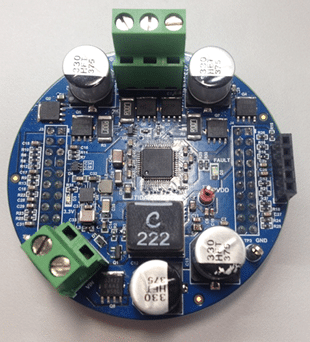By integrating advanced components and offering flexible control options,and ensures reliable performance in demanding automotive environments.

Brushless DC (BLDC) motors offer several advantages over brushed DC (BDC) motors, including higher efficiency, longer lifespan, and the absence of brush-generated electrical noise. These benefits have led to the adopting of BLDC motors in automotive applications, particularly for continuously operating equipment. The TIDA-00901 reference design by Texas Instruments is an exemplary brushless DC motor drive tailored for automotive applications such as HVAC blowers, electric pumps, cooling fans, turbo compressors, and similar equipment. This design operates with typical 12V BLDC rotary motors, with rotational speed regulated by controlling the PWM duty cycle.
The TIDA-00901 by TI design showcases the commutation of a 3-phase brushless motor using sensorless technology while also accommodating Hall sensors, providing flexibility for motor commutation. Targeted for 12-V automotive applications, it can drive motors up to 200 W and handle currents up to 20 A, making it versatile for different motor configurations. Key features include a compact design for efficient control of brushless DC motors, compatibility with or without Hall-effect sensors, a wide supply range, reverse battery protection, and a simple control interface. It includes the DRV8305-Q1 gate driver for robust performance, the LM56300-Q1 step-down converter for efficient power management, an LMT86-Q1 temperature sensor for accurate measurements, and the DRV5013-Q1 Hall Effect sensor for motor position indication.
These features ensure ease of use, reliability, and adaptability in various automotive applications, supported by a getting-started guide and links to GUI and demo projects. It is suitable for a range of automotive applications, including HVAC blowers, water pumps, eTurbo systems, radiator fans, and oil pumps. These applications benefit from the design’s high efficiency, long lifespan, and noise-free operation, making it an ideal solution for modern automotive needs. Texas Instruments (TI) has thoroughly tested this reference design, which includes a bill of materials (BOM), schematics, assembly drawing, and printed circuit board (PCB) layout. The company’s website provides additional information about this reference design. To learn more, click here.





